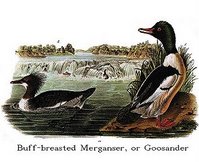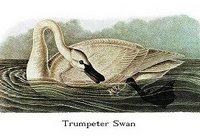Strip mining for birds
 NOV. 12, CEDAR CREEK, mostly sunny, 40—Good thing birding is fun. Four hours wandering around woods and ponds next to the Boone-Callaway county-line creek produced a nice selection of 25 or so resident birds, but nothing new for the year.
NOV. 12, CEDAR CREEK, mostly sunny, 40—Good thing birding is fun. Four hours wandering around woods and ponds next to the Boone-Callaway county-line creek produced a nice selection of 25 or so resident birds, but nothing new for the year.The property my birding friend Donna took me to is reclaimed strip-mine land; Missouri was once a leading coal producer. Even years later, barren soil marks the heaped-up mine spoils.
On this second day of deer-hunting season, we wore blaze orange to affirm our humanness. Partway through the morning we started hearing shots nearby, which soon became an unending fusillade. For a while we couldn't understand what was happening. Hunters gone mad? Since it was doubtful the deer had spent the summer stockpiling their own firearms to fight back, we decided there must be a neighboring gun range.
For me the day's highlight—besides our decision not to row across a deep, frigid pond in a rowboat of unknown seaworthiness—was a dozen or more sleek cedar waxwings flocking around a cedar tree.
Donna also told me news I'd missed on my bicycle trip: ivory-billed woodpeckers may have made a second astonishing reappearance, this time in Florida.



